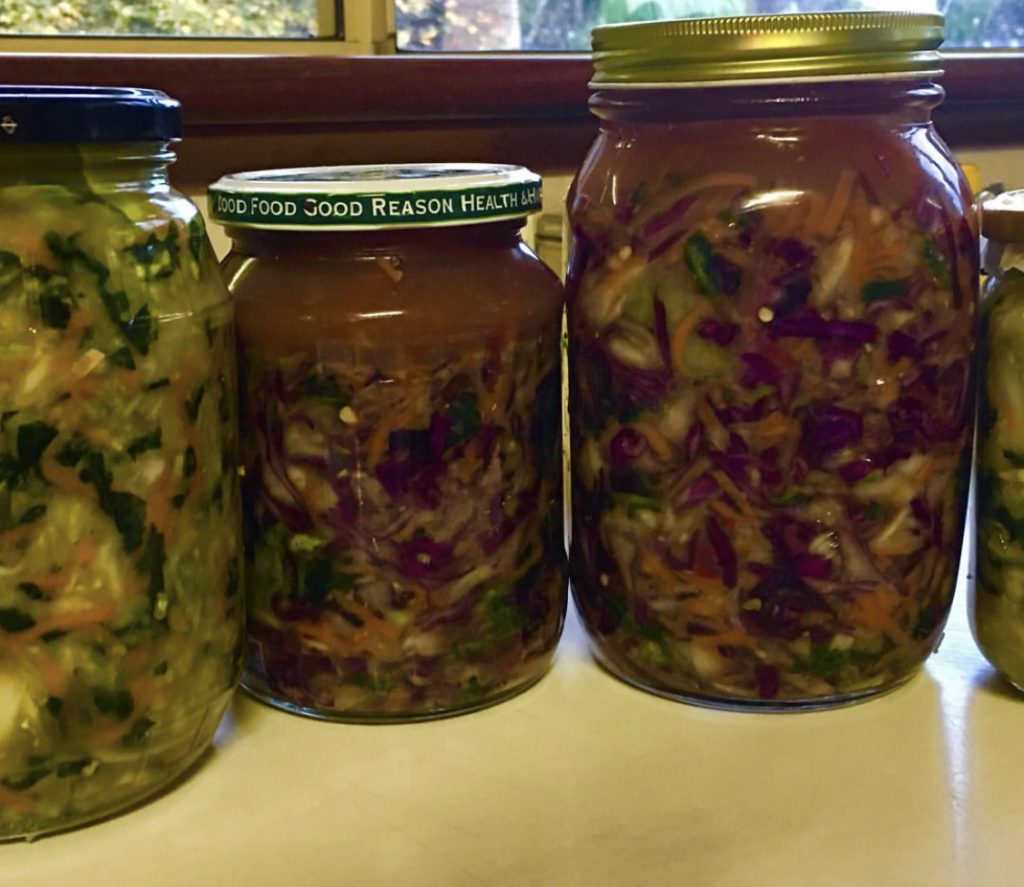1
Combine sliced cabbage, grated carrot, garlic, salt and turmeric. Stir well to distribute the salt
2
Leave for 20-60 minutes to allow the salt to start pulling out the water from the vegetables
3
Use your hands and massage/squeeze the vegetables until you see water coming out
4
Place in a 1 litre jar, push into the bottom to remove all air
5
Pour any juice (which is called Brine) into the top of the jar, all of the vegetables should be below the brine
6
Place a piece of cabbage leaf on top of the brine, you can cut it to size. This keeps all of the vegetable below the brine
7
Make a "weight" out of a zip lock bag. Place a small amount of water in the zip lock bag, seal. Place it in top of the jar on top of the cabbage leaf and seal the jar. The weight holds the vegetables under the brine making sure your fermenting mixture is in a safe anaerobic (no air) environment. Air is bad for the fermenting sauerkraut and can enable the bad bacteria to grow and proliferate, creating mould and other undesirable by-products.
8
Place the jar in a shallow bowl or plate to catch the brine that may leak out during the first week of fermentation, out of direct sunlight. Check daily and clean out spilled brine. You may need to "burp" the jar to release trapped air.
9
Check after a week. Open the jar, smell and taste your sauerkraut. At this point, you can decide to start eating it or let it ferment for bit longer. You can ferment your sauerkraut for up to 4 weeks. The longer you ferment it, the greater the number and variety of beneficial bacteria that can be produced. Research indicates that bacteria numbers peak at 21 days.
10
Refrigerate When you are happy with the texture and taste. Refrigeration slows the fermentation process to the point where you won’t notice significant changes in texture. You can use and keep in your fridge for up to 12 months.


